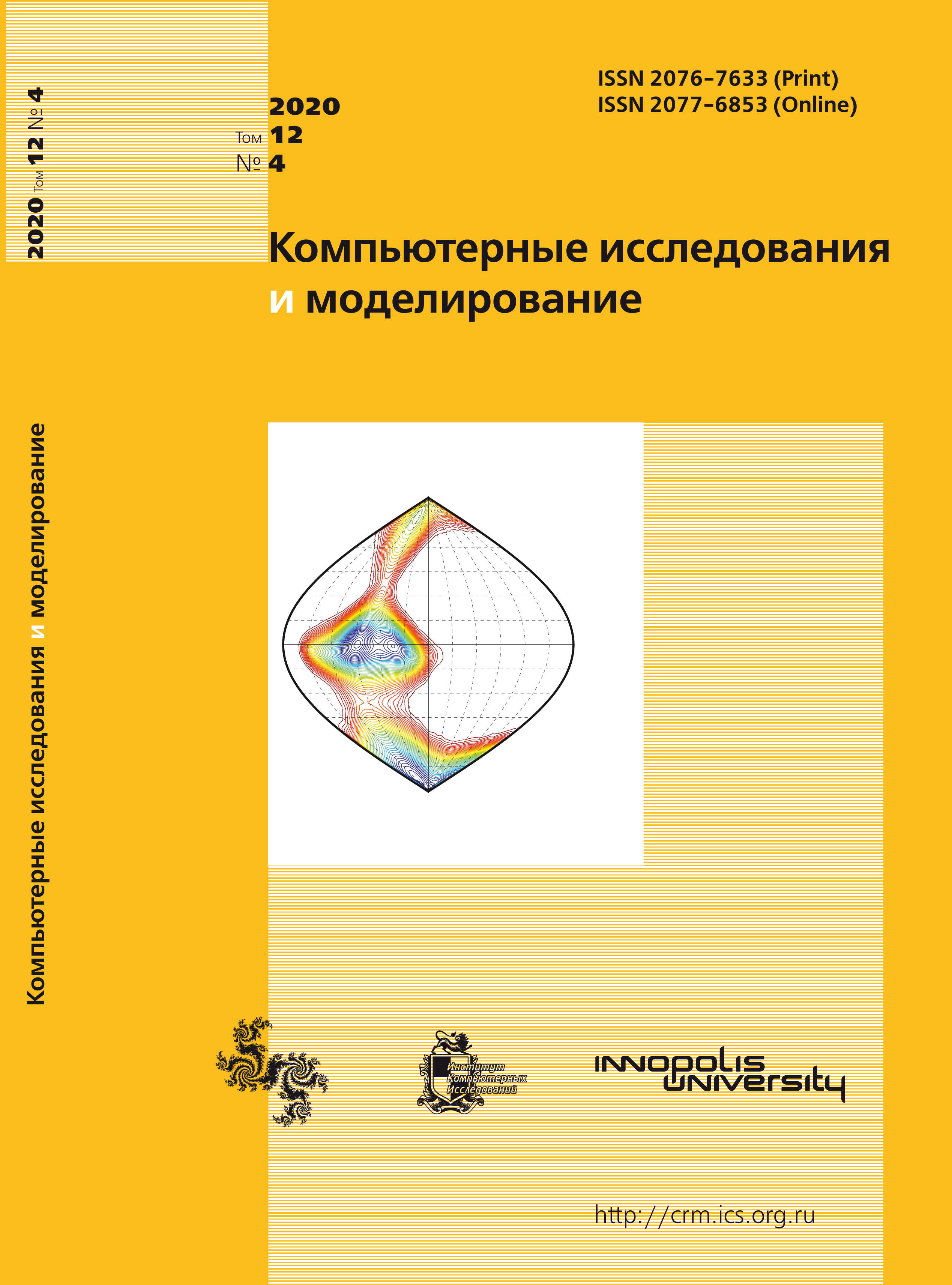All issues
- 2024 Vol. 16
- Issue 1 (special issue)
- 2023 Vol. 15
- 2022 Vol. 14
- 2021 Vol. 13
- 2020 Vol. 12
- 2019 Vol. 11
- 2018 Vol. 10
- 2017 Vol. 9
- 2016 Vol. 8
- 2015 Vol. 7
- 2014 Vol. 6
- 2013 Vol. 5
- 2012 Vol. 4
- 2011 Vol. 3
- 2010 Vol. 2
- 2009 Vol. 1
Boundary conditions for lattice Boltzmann equations in applications to hemodynamics
 pdf (272K)
pdf (272K)
We consider a one-dimensional three velocity kinetic lattice Boltzmann model, which represents a secondorder difference scheme for hydrodynamic equations. In the framework of kinetic theory this system describes the propagation and interaction of three types of particles. It has been shown previously that the lattice Boltzmann model with external virtual force is equivalent at the hydrodynamic limit to the one-dimensional hemodynamic equations for elastic vessels, this equivalence can be achieved with use of the Chapman – Enskog expansion. The external force in the model is responsible for the ability to adjust the functional dependence between the lumen area of the vessel and the pressure applied to the wall of the vessel under consideration. Thus, the form of the external force allows to model various elastic properties of the vessels. In the present paper the physiological boundary conditions are considered at the inlets and outlets of the arterial network in terms of the lattice Boltzmann variables. We consider the following boundary conditions: for pressure and blood flow at the inlet of the vascular network, boundary conditions for pressure and blood flow for the vessel bifurcations, wave reflection conditions (correspond to complete occlusion of the vessel) and wave absorption at the ends of the vessels (these conditions correspond to the passage of the wave without distortion), as well as RCR-type conditions, which are similar to electrical circuits and consist of two resistors (corresponding to the impedance of the vessel, at the end of which the boundary conditions are set and the friction forces in microcirculatory bed) and one capacitor (describing the elastic properties of arterioles). The numerical simulations were performed: the propagation of blood in a network of three vessels was considered, the boundary conditions for the blood flow were set at the entrance of the network, RCR boundary conditions were stated at the ends of the network. The solutions to lattice Boltzmann model are compared with the benchmark solutions (based on numerical calculations for second-order McCormack difference scheme without viscous terms), it is shown that the both approaches give very similar results.
Indexed in Scopus
Full-text version of the journal is also available on the web site of the scientific electronic library eLIBRARY.RU
The journal is included in the Russian Science Citation Index
The journal is included in the RSCI
International Interdisciplinary Conference "Mathematics. Computing. Education"






